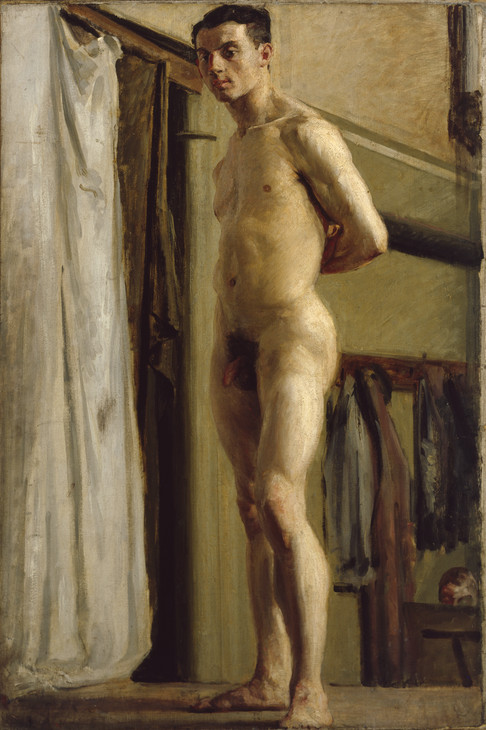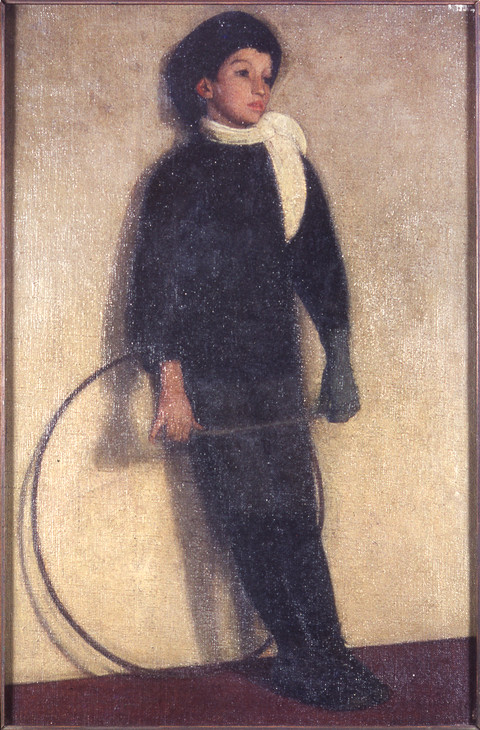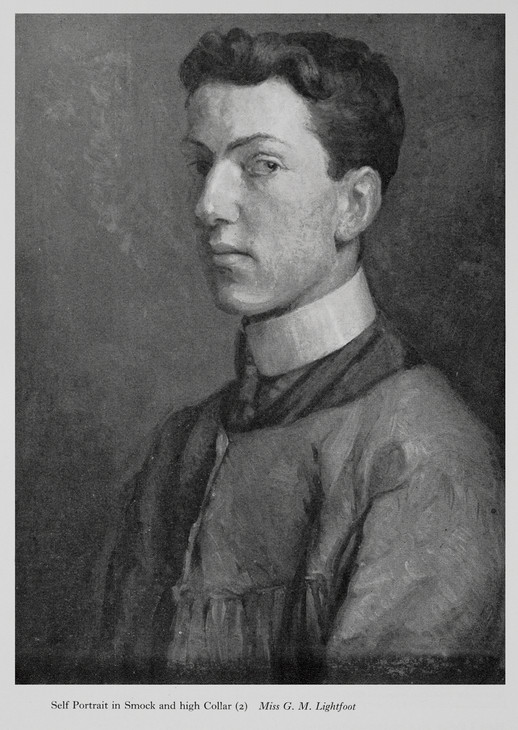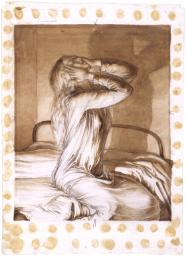Maxwell Gordon Lightfoot 1886–1911
Maxwell Gordon Lightfoot was born on 19 July 1886 in Liverpool (fig.1). He was the second son in a family of five children born to William Henry Lightfoot, and his wife, Maxwell Gordon Lightfoot (née Lindsay). His mother had acquired her unusual name on the wishes of her sea captain father who, prior to being lost at sea during a voyage, and expecting a boy, had left instructions that the baby should be named Maxwell Gordon. The name was bestowed upon the newborn in his memory despite the fact that she was a girl. She then subsequently conferred it upon her son. Lightfoot’s father earned a living as an insurance agent, a commercial traveller and subsequently as a pawnbroker. The family later moved to Helsby in Cheshire and in 1901, Lightfoot, aged fifteen, began his art training at Chester Art School. In 1905 the family moved back to Liverpool and Lightfoot attended evening classes at the Sandon Studios which were then under the directorship of Gerard Chowne (1875–1917), a flower painter in the style of the French artist Henri Fantin-Latour, and J. Herbert McNair (1868–1955), one of the ‘Glasgow Four’ (along with his wife Frances MacDonald, her sister Margaret, and Charles Rennie Mackintosh). Around the same time Lightfoot was able to employ his talents for drawing and design as an apprenticed chromolithographer at the firm of Turner and Dunnett, commercial printers who produced seed catalogues.

Maxwell Gordon Lightfoot 1886–1911
Male Figure Standing 1909
Oil paint on canvas
915 x 610 mm
UCL Art Collections. Slade: First prize figure painting, 1909.
Photo © UCL Art Collections
Fig.2
Maxwell Gordon Lightfoot
Male Figure Standing 1909
UCL Art Collections. Slade: First prize figure painting, 1909.
Photo © UCL Art Collections
On leaving the Slade in 1910, Lightfoot formed a reputation as a talented painter with an idiosyncratic style and subject matter. He generally painted atmospheric pastoral landscapes and stylised figure compositions, drawing in pen and ink and watercolour as well as painting in oil. He became particularly fond of the effects of brown ink, creating dramatic, slightly sinister sepia illustrations of figures or trees, and Tate’s one work by the artist is probably from this period (Tate N04229). The theme of mother and child came to dominate his art and he produced a number of paintings of this subject which are sensitive and well-observed portraits. During the same year Lightfoot began to gain some public recognition. He exhibited in the black and white section of the Liverpool Autumn Exhibition and showed three landscapes at the Winter Exhibition of the New English Art Club.

Maxwell Gordon Lightfoot 1886–1911
Boy with a Hoop. Frank c.1911
Oil paint on canvas
765 x 508 mm
© Private collection
Courtesy of Wendy Baron
Fig.3
Maxwell Gordon Lightfoot
Boy with a Hoop. Frank c.1911
© Private collection
Courtesy of Wendy Baron
The memory of Lightfoot’s art and career has been overshadowed by the sensation of his premature and tragic death. In December 1910 he had met Lilian Kate Thompson, an artists’ model. They became engaged a few months later, but for some reason his parents disapproved of the match. Apparently the emotional strain proved too much for him and on 27 September 1911, the night before he was due to visit Liverpool to introduce his fiancée to his family, he cut his throat with a razor and died of his injuries. He was twenty-five years of age. The inquest passed a verdict of ‘suicide whilst of unsound mind’. Despite the fact that he was supposedly preparing for an exhibition of his work to be held at the Carfax Gallery, no paintings were found in his studio after his death and it is possible that Lightfoot destroyed them all before killing himself. His obituary in the Times on 2 October 1911 mourned the loss of a gifted painter who ‘showed extraordinary promise of a brilliant future’.6 There are only a few of Lightfoot’s works in public collections. The greatest number is to be found in the Walker Art Gallery, Liverpool, where the only solo exhibition of his art was held in 1972.
Notes
Faculties of Arts and Laws and of Science, ‘Prizes and Certificates: Fine Art’, College Calendar, University College London 1896–1910. See Emma Chambers, ‘Slade Influences on the Camden Town Group 1896–1910’, The Camden Town Group, Tate 2011, http://www.tate.org.uk .
Reproduced in The Painters of Camden Town 1905–1920, exhibition catalogue, Christie’s, London 1988 (88).
Catalogue entries
How to cite
Nicola Moorby, ‘Maxwell Gordon Lightfoot 1886–1911’, artist biography, April 2003, in Helena Bonett, Ysanne Holt, Jennifer Mundy (eds.), The Camden Town Group in Context, Tate Research Publication, May 2012, https://www


